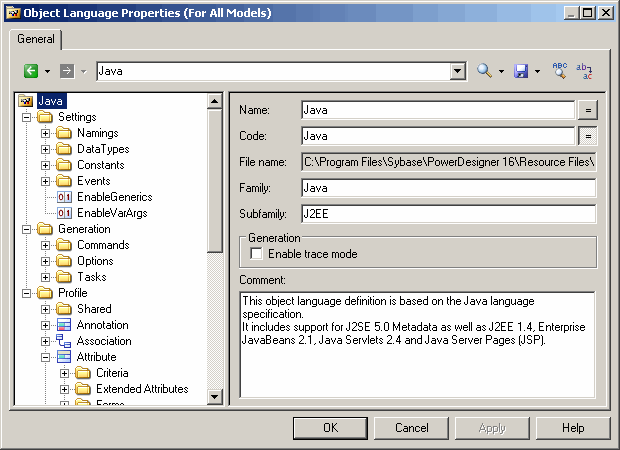A separate definition file is supplied for each OOM, BPM, and XSM language supported by PowerDesigner, which defines the syntax and guidelines for generating objects and implementing stereotypes, data types, scripts and constants for the language. You must select a language definition file when you create an OOM, BPM, or XSM.
- Settings - contains data types, constants, namings, and events categories used to customize and manage generation features. The types of items in this category differ depending on the type of resource file.
- Generation - contains generation commands, options, and task.
- Profile - contains extensions on metaclasses.

The root node of each file contains the following properties:
|
Property |
Description |
|---|---|
|
Name |
Specifies the name of the target language. |
|
Code |
Specifies the code of the target language. |
|
File Name |
[read-only] Specifies the path to the .xol, xpl, or .xsl file. If the target language has been copied to your model, this field is empty. |
|
Version |
[read-only] Specifies the repository version if the resource is shared via the repository. |
|
Family |
Enables certain non-default features in the model. For example, object languages of the Java, XML, IDL and PowerBuilder® families support reverse engineering. |
|
Subfamily |
Fine-tunes the features for a given family. For example, in the Java family, the J2EE subfamily supports EJBs, servlets and JSPs. |
|
Enable Trace Mode |
Lets you preview the templates used during generation. Before starting the generation, click the Preview page of the relevant object, and hit the Refresh tool to display these templates. When you double-click on a trace line from the Preview page, the Resource Editor opens to the corresponding template definition in the Profile\Object\Templates category. The code of the template may be colored (see Syntactic coloring in section Generated Files category). |
|
Comment |
Specifies additional information about the target language. |